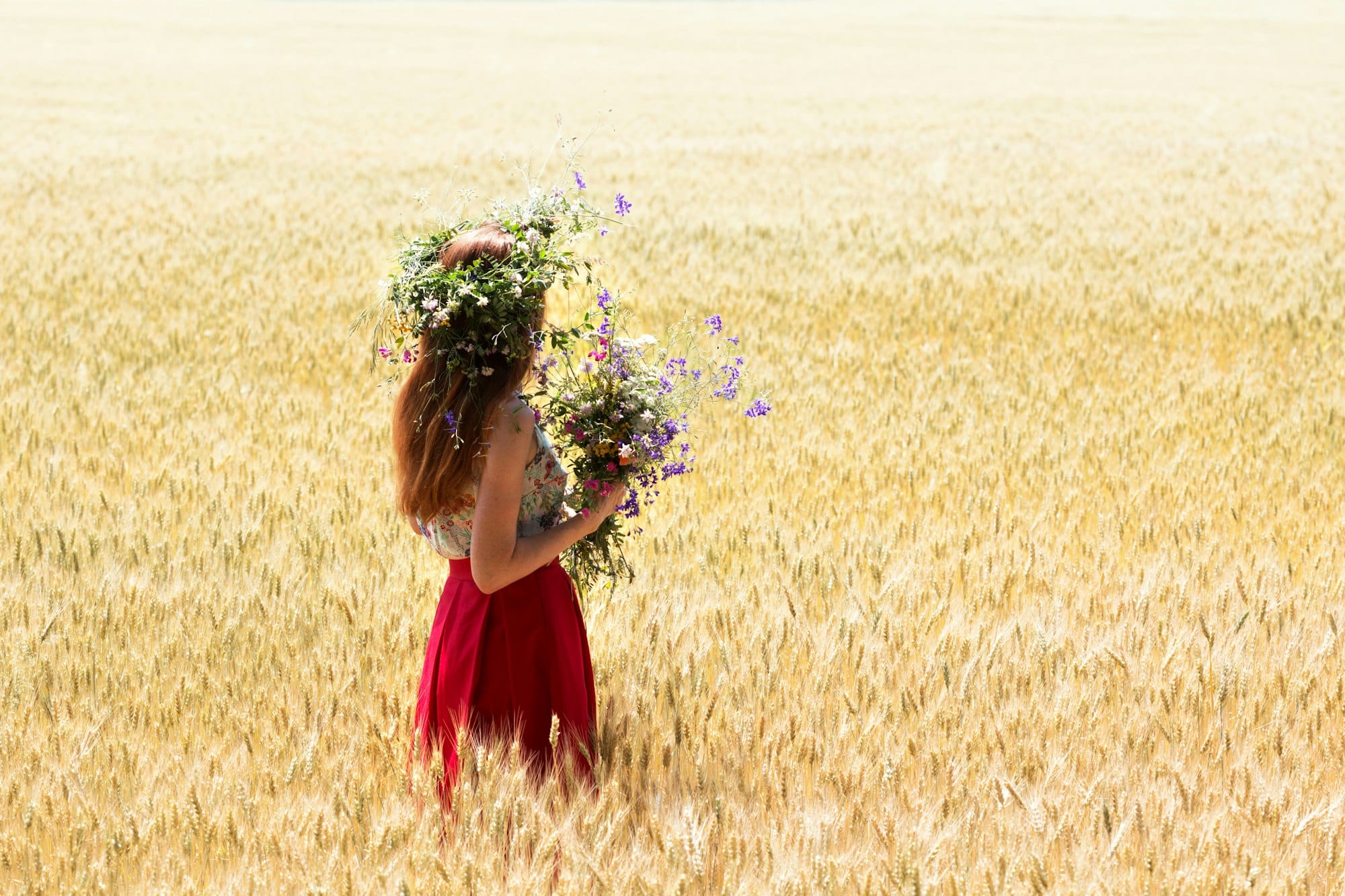How to Plan and Grow a Native Wildflower Meadow in Urban UK Settings?

With the ever-increasing urbanisation, it’s more important than ever to create and maintain green spaces in our cities. One way to do this is by planting a native wildflower meadow. Meadows are an essential part of our ecosystems, supporting a wide array of wildlife and promoting biodiversity. Here, you’ll learn how to transform your urban area into a vibrant, living ecosystem full of wildflowers and other native species, whether it’s a small patch of lawn or a larger area.
Choosing the Right Area and Preparing the Soil
When planning your wildflower meadow, the first step is to identify a suitable area. It could be a patch of lawn, a neglected corner of a park, or even a rooftop garden. The key is to choose an area with good sunlight exposure, as most wildflowers need plenty of sunlight to grow.
This might interest you : What’s the Latest on Nanotechnology for Water Purification in Remote Areas?
After choosing the area, soil preparation is the next critical step. As wildflowers are typically hardy, they can grow in a variety of soil types. However, fertile, well-drained soil will give the best results. If your soil is clay or sandy, consider amending it with organic matter to improve its structure and fertility.
It’s also worth noting that wildflowers prefer soil with a slightly acidic to neutral pH. You can test your soil’s pH using a home testing kit. If the pH is too high or low, you can adjust it using lime (to raise pH) or sulphur (to lower pH).
In parallel : Obtaining a NIF in Portugal: practical advice for obtaining the precious sesame
Finally, clear the area of existing grass, weeds, and other unwanted plants. You can do this manually or by using a weed killer. Be careful to choose a product that won’t harm your wildflower seeds.
Selecting the Right Wildflower Species
Selecting the right wildflower species is crucial for a successful meadow. Ideally, you should choose native species, as these will attract native wildlife and be more resilient to local weather conditions.
In the UK, common wildflower species include poppies, cornflowers, yarrow, ox-eye daisies, and wild carrot. They offer a colourful display and are beneficial to a range of insects and birds.
Remember to choose a mixture of annual and perennial species. Annuals grow, flower, set seed, and die within one year, providing a quick splash of colour. Perennials live for several years, offering a steady presence and varying displays as they bloom at different times.
Also, consider the height of your plants. Taller species like foxgloves create vertical interest and provide habitats for insects, while shorter species create a ground cover that prevents weed growth.
Sowing the Wildflower Seeds
After the area is prepared and the species are selected, it’s time to sow your seeds. The best time to do this in the UK is in the spring or autumn when there’s enough moisture for the seeds to germinate.
Mix your wildflower seeds with horticultural sand to help you see where you’ve sown them. Scatter the seeds evenly over the area, then gently rake them into the soil.
Next, water the area well, and continue to water it regularly if there isn’t much rain. Be patient: wildflowers can take a while to germinate and establish.
Caring for Your Wildflower Meadow
Once your meadow is established, it will require less maintenance than a traditional lawn. However, there are still some care tips to follow.
First, water your meadow during prolonged dry periods. While wildflowers are generally drought-tolerant, they may still appreciate some extra water in particularly dry weather.
Next, keep an eye out for weeds. While a well-established meadow should outcompete most weeds, some may still creep in. Remove them promptly to prevent them from spreading.
Finally, mow your meadow once or twice a year, usually in late summer or early autumn after the wildflowers have set seed. This will help to spread the seeds and maintain a healthy, vibrant meadow.
Encouraging Wildlife
A native wildflower meadow provides valuable habitat for a diverse range of wildlife. By planting a variety of species, you’ll attract different insects, birds, and mammals.
To further encourage wildlife into your meadow, consider adding features such as a log pile for beetles, a bird bath, or a nesting box. Avoid using pesticides, as these can harm wildlife. Instead, aim to create a balanced ecosystem where pests are controlled naturally by predators.
In conclusion, creating a wildflower meadow in an urban setting is a rewarding project that benefits both people and wildlife. With careful planning, preparation, and maintenance, you can transform any urban space into a beautiful, biodiverse meadow.
Enhancing Your Mini Meadow with Native Plants
Creating a wildflower meadow isn’t just about sowing seeds and watching them grow. It’s about carefully selecting a range of native plants that will thrive in your specific conditions and provide a diverse habitat for wildlife.
When planning your mini meadow, focus on plants that are local to your area. You can visit nearby nature reserves or parks to find out which species are native and observe them in their natural habitat. This will give you a clear sense of what plants are best suited to your local climate and soil conditions.
There are countless varieties of wildflower seeds suitable for a UK meadow. Some are known for their resilience and ability to attract pollinators, while others are prized for their vibrant colours. Foxgloves, bluebells, and the unique yellow rattle are all native to the UK and excellent choices for an urban wildflower meadow.
Another element to consider is the balance between grasses and wildflower species. Traditional hay meadows usually have a high proportion of grasses, such as fescues and ryegrasses, which provide structure and support for the wildflowers. You can also consider using a wildflower turf instead of a seed mix, which is pre-grown and can be rolled out like a carpet.
In the face of climate change, planting native species is more critical than ever. These plants are adapted to local conditions and provide essential food and habitat for native wildlife. By choosing them, you’re contributing to a healthier, more resilient urban ecosystem.
Sowing Your Meadow Seed: The Final Steps
Once you’ve chosen your wildflower seed or wildflower turf, it’s time to sow. Following the right steps will ensure that your seeds germinate and your meadow thrives.
Before sowing, make sure your soil is well-prepared. Remove all existing vegetation and rake the soil to a fine tilth, ready for your wildflower seeds or turf. Scatter your seed mix evenly over the soil, or lay your turf according to the supplier’s instructions.
After sowing, water the area thoroughly. This will help the seeds or turf to make good contact with the soil and begin the germination process. Continue to water regularly, especially if there’s no rain, but be careful not to overwater.
It’s essential to be patient. Creating a wildflower meadow is a process that takes time. In the first year, you might see more grasses and annual wildflower species while the perennial wildflower species establish themselves. However, by the second year, you should start to see a more diverse range of flowers and grasses, creating a beautiful, multi-coloured meadow.
Conclusion: Reaping the Rewards of Your Wildflower Meadow
Creating a wildflower meadow in an urban setting is a rewarding endeavour, both for you and the local wildlife. It’s a project that brings beauty and biodiversity to your doorstep, turning any space into a miniature ecosystem.
The rewards go beyond aesthetics. Your meadow will become a haven for a wide variety of insects, birds, and small mammals, contributing to biodiversity in an urban environment. It might also inspire others in your community to follow suit, multiplying the impact of your efforts.
Perhaps most importantly, creating a wildflower meadow is a step towards combating climate change. Native plants sequester carbon, improve soil health, and provide essential habitats for insects and birds. Each mini meadow contributes to a greener, healthier city, one wildflower at a time.
The process of planning, preparing, sowing, and caring for your meadow is an investment of time and effort. But the result, a thriving display of native species dancing in the urban wind, is well worth it. Your mini meadow will serve as a constant reminder of the beauty and resilience of nature, even in the heart of the city.
